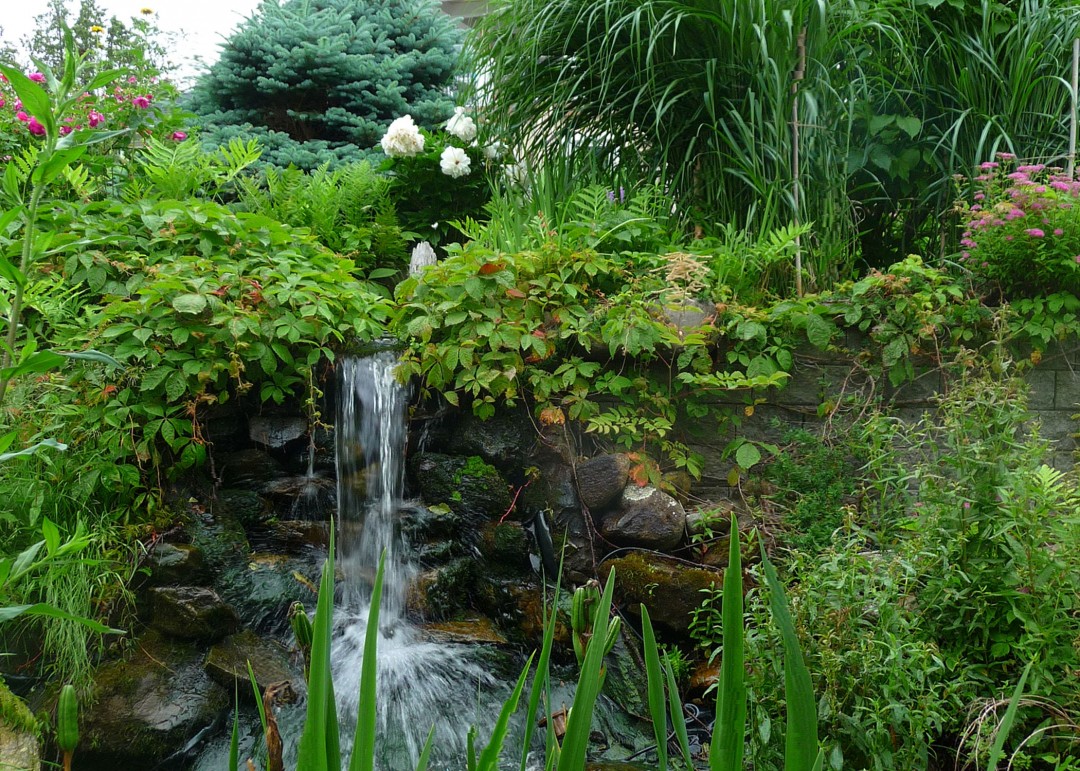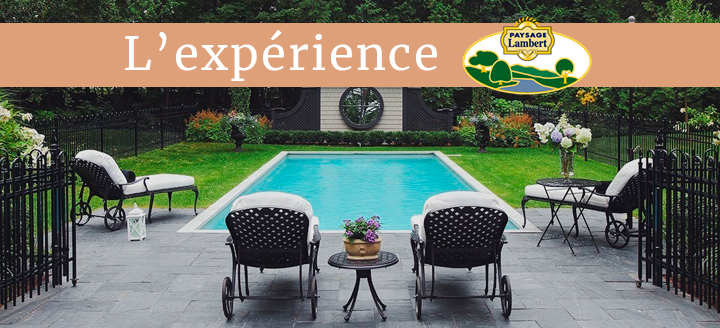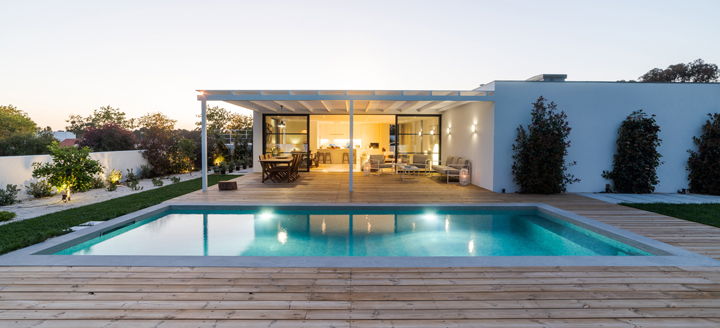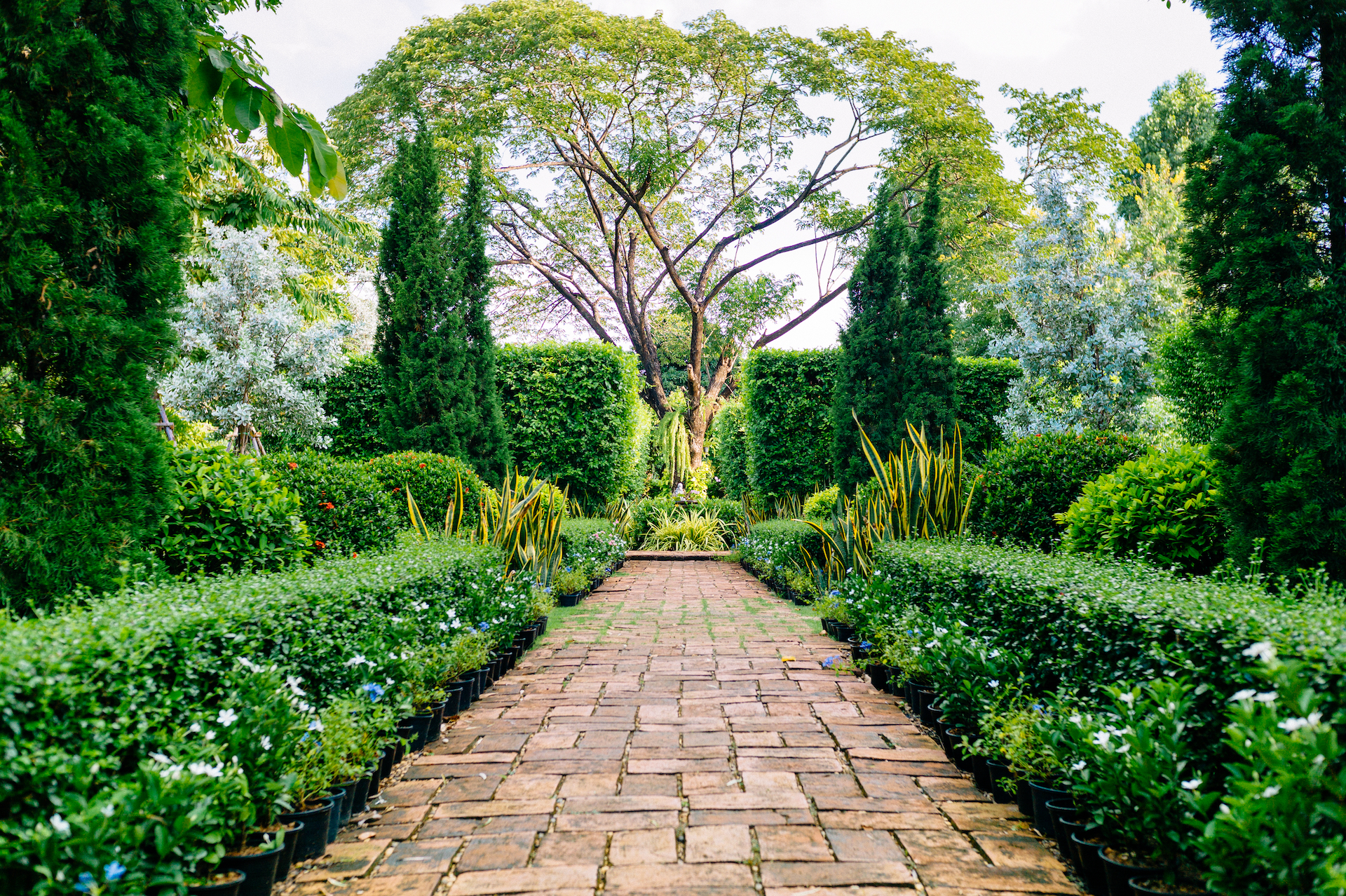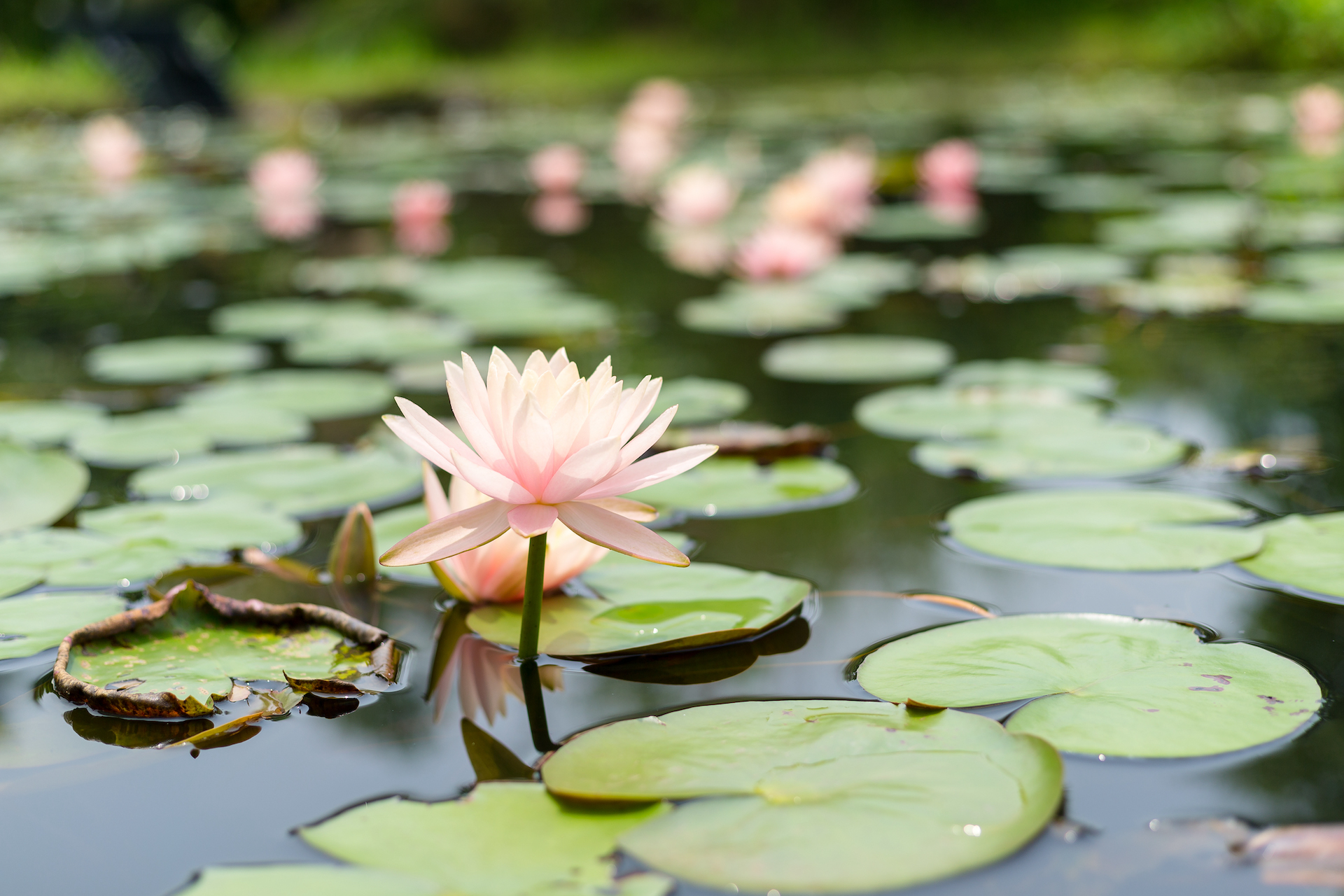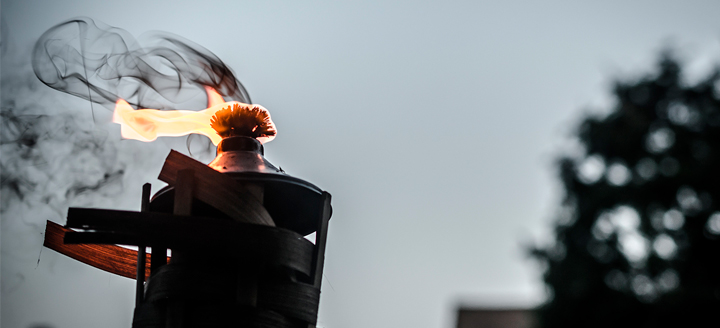With its freshness and peaceful sound, water easily manages to create a soothing atmosphere when integrated into the exterior scenery of your home. In order to surround yourself with it, why not opt for a water garden? Whether you want a pond, waterfalls or fountains, a landscape architect can help you add these elements to your decor. With the help of our team, you will get the landscaping of your dreams !
What is a water garden ?
A water garden is both a vegetal and aquatic arrangement where water is of course in the spotlight. It can be presented in an easy and simple way (with watertight receptacles in which to grow aquatic plants) or it can be a very elaborated concept (with large ponds with waterfalls, water jets and elegant overhanging bridges, etc). It then becomes a matter of finding the variation that best fits the style you’re looking for, and that respects the budget you have.
How can a landscape architect work with you to develop the structure ?
The landscape architect is a professional that specializes in the creation or reorganization of outdoor spaces of all sizes. This expert puts his knowledge, skills and artistic side to the benefit of the client.
Landscape designers have different expertises. Creation of water gardens is one of them. The landscape designer will make sure to oversee the different stages of the work.
1. Visualize your perfect plan and the elements to put in place
What’s the most important aspect for you ? A single pond? A small natural waterfall that flows into a larger pool? A modern looking waterfall? Do you have any visuals (photos, videos) of what attracts and inspires you? Depending on the characteristics of your land, the location of your house and your budget, the landscape architect will be able to tell you if what you want is realistic or not, and to make suggestions if needed. He will be able to create a tailor-made plan for you to help you visualize the possible result.
As mentioned before, when designing the water garden plans, it’s crucial to decide the desired style at the beginning. Most of the time, water gardens allow you to create a bucolic setting. Ample vegetation, wild flowers and stones are often used to create a body of water. However, it’s also possible to set up more modern assortments to create the water garden, with light shows and symmetrical design composed of angular pieces. A popular trend, which allows for an amplified aesthetic result, is to focus on a very slow flow of the body of water. It gives a static and peaceful feel to the water garden.

Whatever your desires may be, a landscape designer is fully qualified to help you choose what you wish to incorporate to your decor, and provide you with different options to achieve your project !
2. Types of ponds and the adequate equipment
There needs to be at least one pond in order to create a water garden. Your landscape architect will be able to select the pond that fits your needs and that is the most relevant to your project. He will also make sure you get all the equipment required for its maintenance.
The « flexible-walled» pond :
The flexible-walled pond uses a geomembrane (a waterproof material) to create the body of water.
It’s the most common technique for designing a garden with a more rustic feel to it. Indeed, this technique helps create softer contour ponds that best mimic natural water currents. In some instances, the geomembrane is used in addition to a rigid wall, and makes it possible to guarantee the waterproofing of the pond.
The « rigid-walled » pond :
A rigid-walled pond can be built from different materials such as concrete, stainless steel or aluminum. Its installation is often easy to do, since the container will be prefabricated. These types of walls make it possible to create a more modern and geometric rendering than the geomembrane.
The adequate equipment :
When setting up any ponds, pools or bodies of water, you must think about the mechanical aspect, and not only focus on the aesthetic of it all. To avoid ending up with a pool of stagnant water, it’s essential to install a pump and a filter. In addition, you need to think about equipment to control the flow of water and the intensity of the fall. A drain at the bottom will be crucial for the maintenance of the basin. It will also allow water to be drained during winter, in order to prevent any breakages.
3. The most suitable plants for your project
Adding vegetation to a body of water is a common practice for landscapers. However, you have to think about it wisely and make an informed choice in order to create an aesthetic water garden. Many opt for vegetation that creates a bucolic and natural atmosphere. But it’s nice to know that there is a wide variety of aquatic plants that can be added to your garden.
Submerged plants
Submerged plants (known as Eloda Canadensis) act as natural filters and will also oxygenate the pond. This type of vegetation is sold in a basket-typed container. The container is designed to be placed at the bottom of the pond and will facilitate the maintenance of the plant as well as the maintenance of the pond. You can also use water plant fertilizer with this type of vegetation.
Emerging plants
Emerging plants act as water filters in shallow areas. Depending on the plant, it will either come in a basket or in a jar-typed container. You need to have all the information regarding its maintenance, as it differs from submerged plants. Note that some of them may produce different types of flowers, so be aware of this while shopping !
Floating plants
Floating plants, as you may know, will always stay on the surface of the pond. They sometimes prove to be useful (mostly if you keep some fish in the pond) but their main function is purely aesthetic. Some of these plants flower and others don’t, which can impact the choice you’ll make, giving the desired layout you’re looking for. Note that the maintenance for floating plants is pretty easy, and there’s no need to fertilise !
4. Get the personalized support you need !
Regardless of the size of your landscaping project, a landscape designer is a must ! From start to end, you should hire a professional for your project, you won’t regret it. He will make sure that the landscape respects and is coherent with the design of your home, and most importantly, will ensure the conformity and quality of the work throughout the project.
To get the most out of the water garden of your dreams, there’s nothing like hiring the right landscape designer ! Wish to know more about the necessary steps to take in order to develop your landscaping project? Download our guide!


-752-1.jpg?width=2500&height=1667&name=Projet%20Manoir%20Hovey-Paysage%20du%20monde%20des%20affaires%20(Moment%20sublime)-752-1.jpg)
